TRIUMPH THRUXTON
The T120 Thruxton is the most revered of all Triumph Bonnevilles. This one is now restored back to its ’60s race glory – but its owner had no idea how extra special it was when he chanced upon it
Words MICK DUCKWORTH Photography GREG MOSS
When Bernard Kuropka bought a Triumph Bonneville with the registration number MAC 234E in the late 1970s, he had no idea of its historical significance. “I bought it for £260,” the Hampshire-based engineering company director recalls. “It looked like a normal Bonneville with an Aubergine and white tank – but it was quick, always went well and had a close-ratio four-speed ’box. I knew there was some factory connection, but thought it may have been a TT Marshal’s bike.”
What he had actually stumbled upon was not only one of the limited-edition 650cc T120 Thruxton versions made for production racing from 1965-69 that carry the most kudos of all Bonnevilles – it was also one of the batch of four built for 1967 for factory riders and factory-backed teams that are revered as most successful. And the bike’s story is made even more extraordinary by the fact that Bernard has not only owned it once, but twice.
“The wife of a previous owner, a lady called Evelyn, traced me and wanted to buy the bike back for him as surprise. A year later, in 1978, my wife Bernadine and I were saving hard to get married, so I sold to Evelyn for £350.” More than 30 years later, Bernard was looking through a photo album when he found letters Evelyn had written to him.
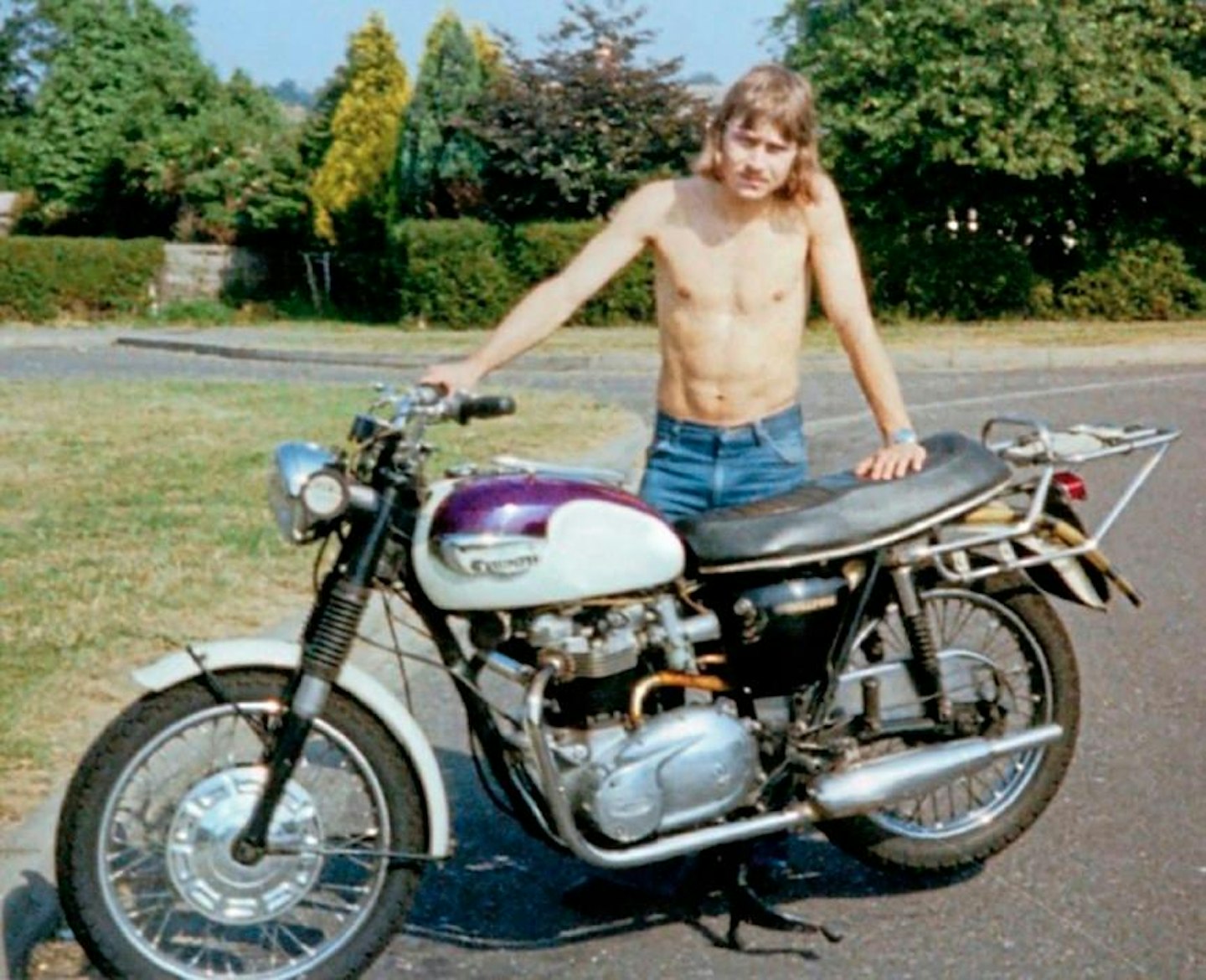
“One had an address – and after 15 minutes on Google, I had made contact.” Although now divorced, Evelyn was able to put him in touch with her ex-husband who still owned the bike – and within months it was Bernard’s again. While complete, it had a seized engine.
MAC 234E was originally allotted to Elite Motors and later bought by the London dealer. It was raced to fourth place in the 1967 Production TT by Lance Weil and to third in the 750cc class at the 1968 Brands Hatch 500-mile GP d’Endurance by the popular Californian, teamed with Martyn Ashwood. In the 30-lap Production race at the 1968 Mallory Park 2000 Guineas meeting, Ashwood and Joe Dunphy finished second on the bike. The celebrated MACs also include two 750cc Production TT winners: John Hartle’s 1967 machine with registration MAC 233E and Malcolm Uphill’s MAC 232E, on which he lapped the Mountain Course at 100mph in 1969.
When Bernard showed his bike to Thruxton Bonneville registrar Hugh Dickson, it caused much excitement. “We didn’t know where 234 was!” Dickson exclaimed. He also recommended that Bernard contacted Thruxton parts specialist George Hopwood and Claudio Sintich (author of the definitive book Triumph Thruxton Bonneville 1959-1969) for guidance regarding his plan to restore the bike to 1967 condition.
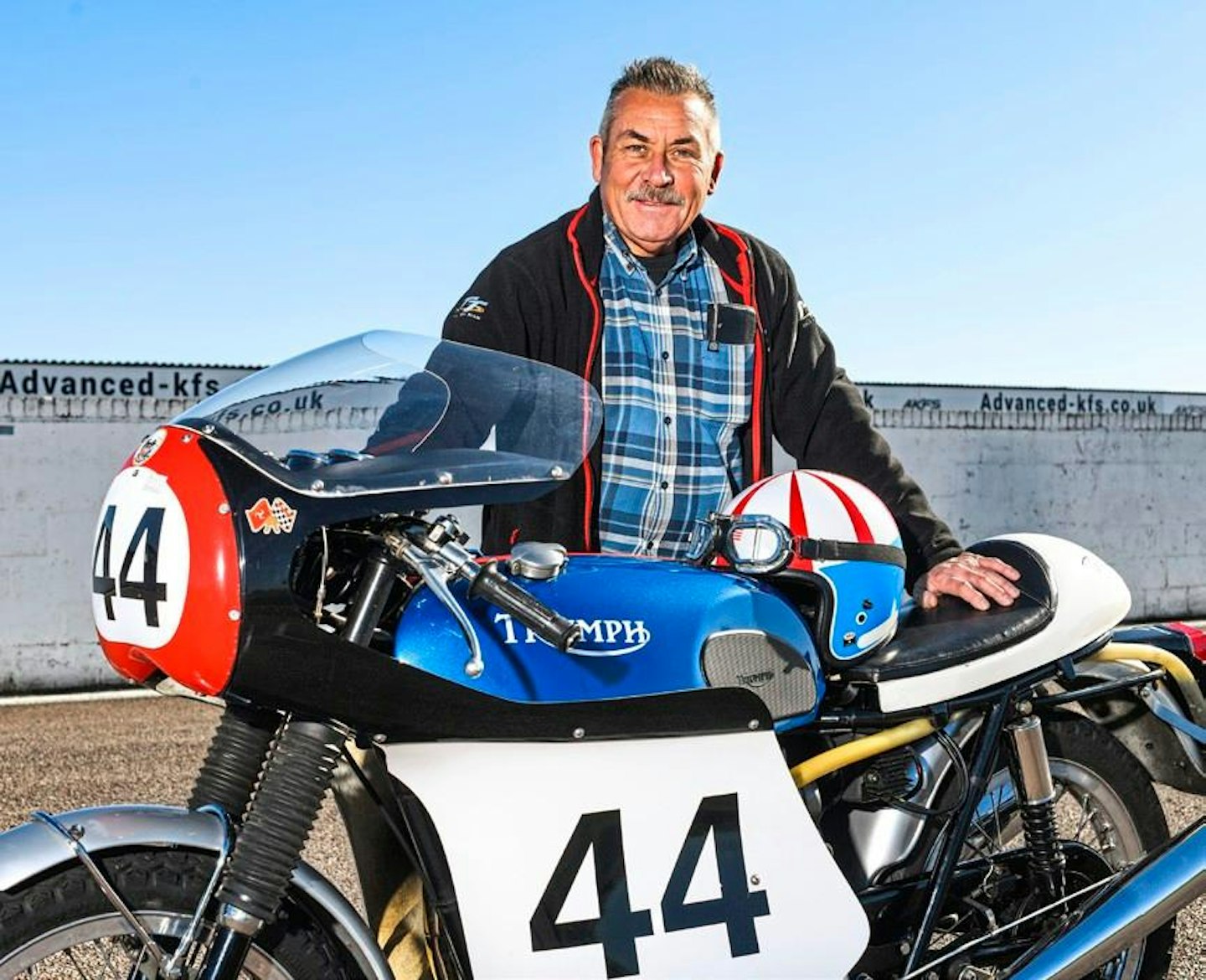
Factory records show that the bike had an ignominious start in life – built as a 1966 TR6 Trophy, it was deemed defective as it came off Meriden’s assembly line. It was subsequently passed to the experimental department to become one of the Thruxton Bonneville batch for 1967. With frame number DU 58464, it was one of four registered by the factory with the denomination ‘MAC’ followed by a three-figure number and the 1966-1967 ‘E’ suffix in April 1967. The crankcase has no number; the original was replaced after being wrecked by primary chain failure in the first major outing at the 1967 Brands Hatch 500-miler. At the time, riders Weil and Peter Carrana were holding third place. It’s likely that there were other major blow-ups during the machine’s racing career, but Bernard found much of the 1960s engine’s special specification intact.
“The crankshaft’s light flywheel fitted from 1966 to 1968 has some more weight pared off,” he explains. “I had it dynamically balanced by Basset Down. After freeing the bores, I fitted new 9:1 pistons more suitable for modern conditions than the original 11:1s, on Thunder Engineering rods. Plus-40 bores give about 666cc. The Spitfire-profile cams have three-inch radius followers in Thruxton tappet blocks and the timing wheels are drilled for lightness. There is some porting in the head, which has Nimonic valves controlled by W&S springs with lightened retainers. The lightened rockers (electronically weighed by Bernard for equality) have spacers on their spindles in place of Thackeray washers [to cut friction].”
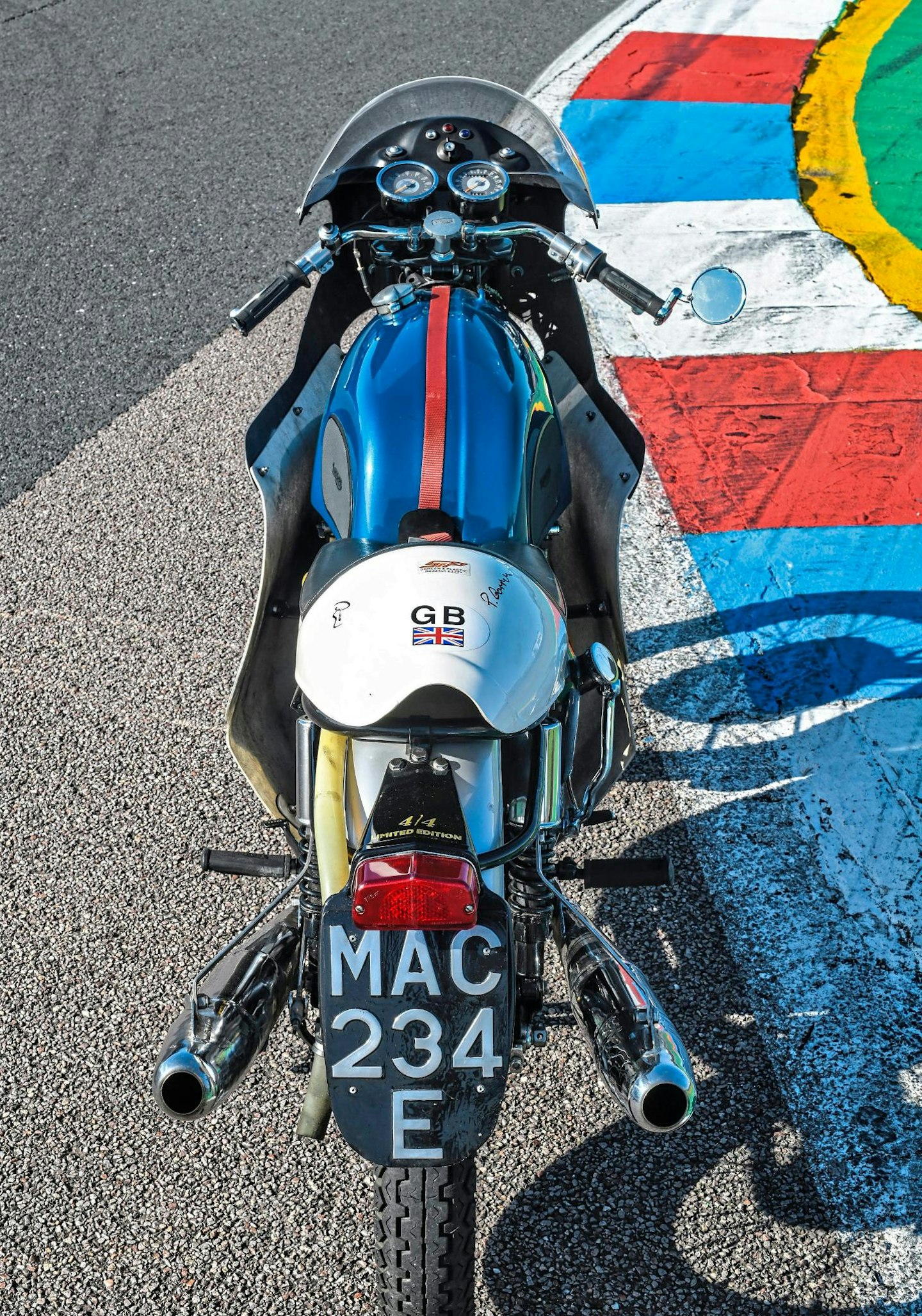
Full-race Amal GP carburettors were replaced by less fussy 30mm Concentrics early in the machine’s racing life. Bernard fitted 32mm instruments and simplified their head connections with screw-in alloy tubes tapered for optimal flow, with nine inches from throttle slide centre to valve. The gearbox is mysteriously marked as a motocross type: WR (Wide Ratio) MMX and has some metal cut away from the outer cover to save a few grammes. The 20/43-tooth final-drive gearing indicates a potential 70mph in the high first ratio and 125mph in top.
Both wheels have 19in rims and well ventilated brakes. Triumph and BSA raced in 1967 with the twinleading-shoe front brake to be introduced on 1968 production – but Bernard changed the front backplate to the revised 1969 type with an improved cable run, and crafted an alloy air scoop. There are five holes on the other side of the hub where, he says, replica builders sometimes make six, due to misinterpreting blurred action photos. The rear brake has 20 backplate drillings and four larger holes on the right side, while its pedal is the correct factory type.
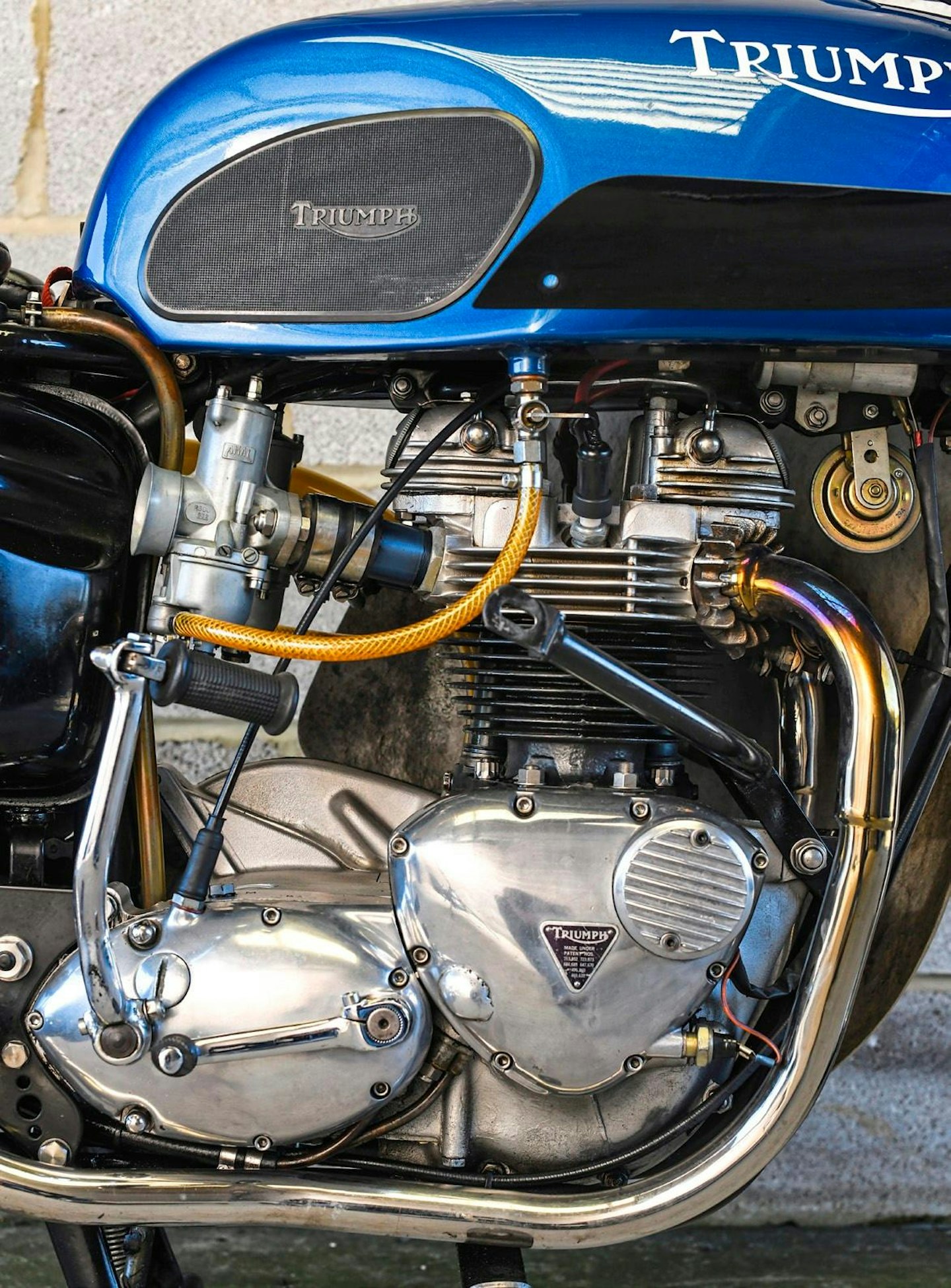
An original modification for better handling is shortening of the forks’ stanchions by 20mm. They are held in Police-specification yokes without any offset. Bernard added his own tweaks; the shuttle valves’ washers that normally float are fixed with epoxy glue to improve action during hard braking. Not covered by headlamp brackets, the stanchions are black-oxide coated.
Period Thruxton silencers were a lucky autojumble discovery, bought for £45 after some mild bargaining. The single seat, complete with a Screen & Plastic maker’s sticker, was another happy find, while the correct Avon ‘nosecone’ fairing was available from Sprint Manufacturing, descendant company of the original maker. The alloy five-gallon fuel tank supplied by Hopwood was painted by Triumph colours specialist John Critchlow, blowing a thin coat of Pacific Blue over a silver base to replicate the original metallic look.
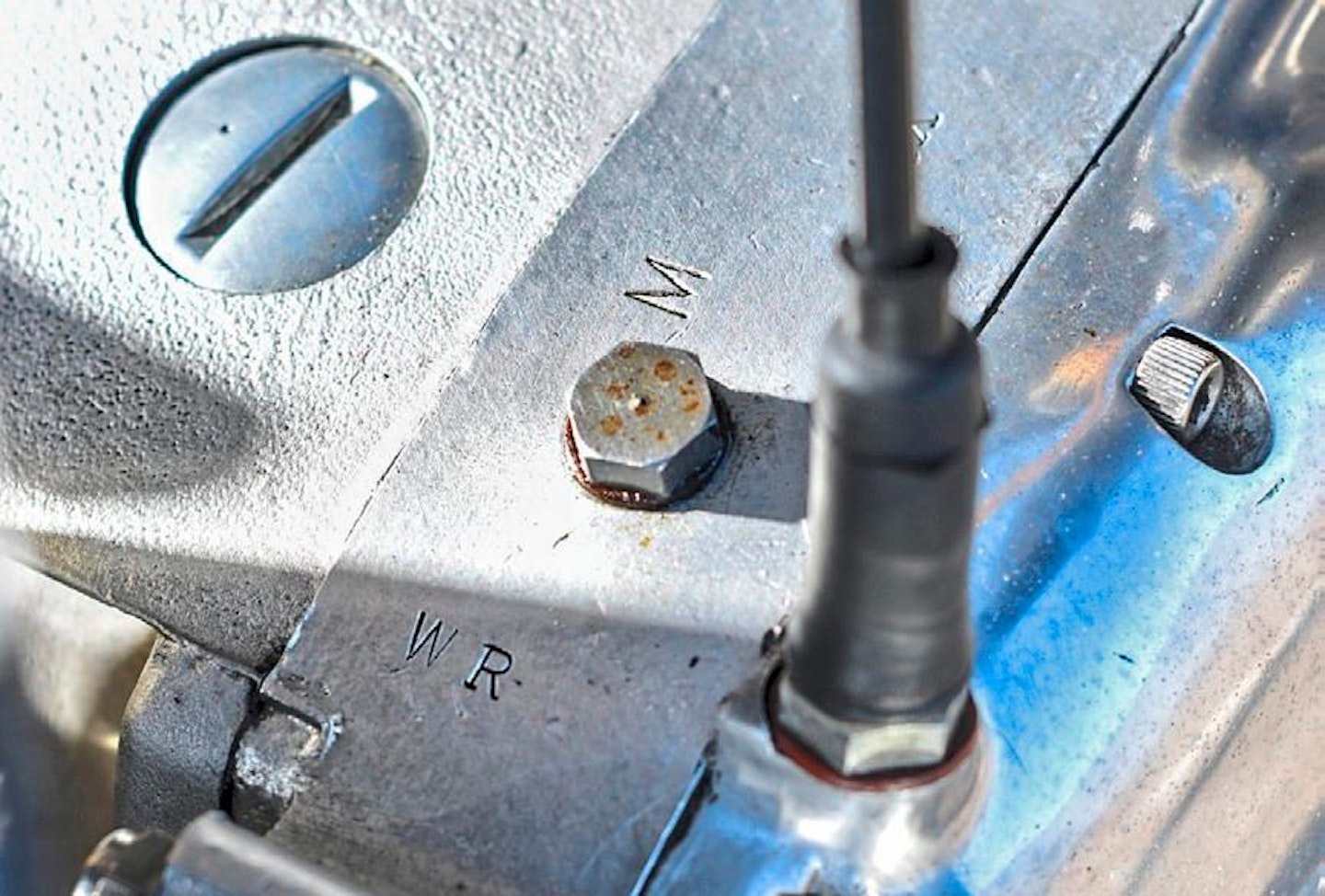
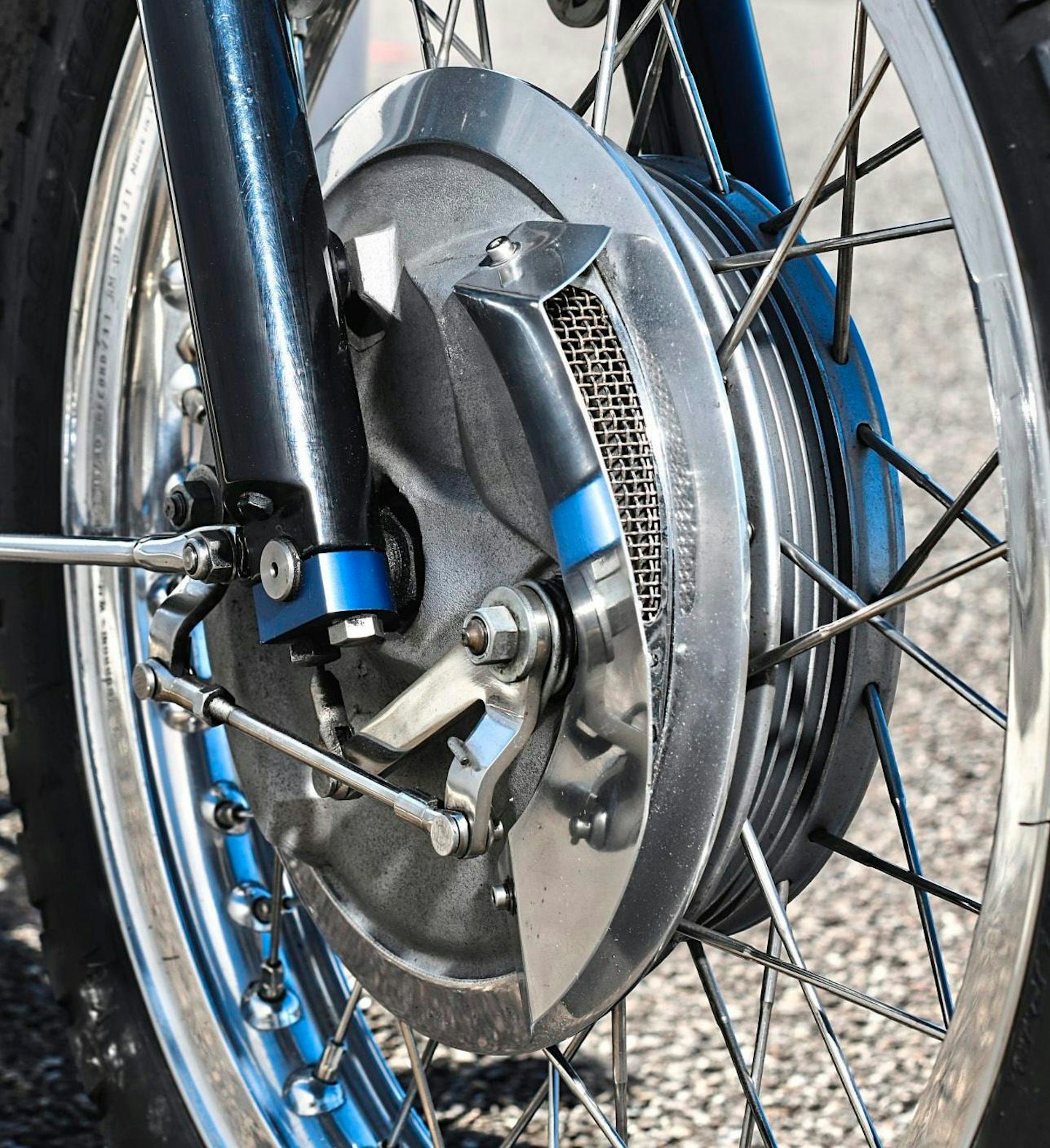
Although clearly a lot of time and effort has been spent on the restoration, Bernard still likes to ride the bike, so he hasn’t shied away from practical modifications to his rarity. For instance, the 1967 rear lamp and licence plate mounting was replaced by the less breakage-prone 1969 type, a modification he can justify to purists. “The stronger later bracket was on Malcolm Uphill’s MAC 232E when he won the 1969 Production TT,” he explains. He’s also done some non-standard modernising. He replaced the clutch basket with a machined alloy item containing alloy-based friction plates, while a bulge at the rear of the altered timing cover conceals a post-1979 type four-valve oil pump. He fitted a 10ah 12v lithium battery, Podtronics rectifier/regulator, a sturdier ignition switch than the original Tiger Cub type and Smiths-replica electronic instruments. The dash panel includes a colour-changing LED voltage indicator light.
Since getting it back on the road in 2013, Bernard has made three Isle of Man trips with the Thruxton, although unfortunately he did experience another ride that wasn’t so pleasurable. In the summer of 2015, he was riding to visit an old friend in hospital. “A car driver swiped me off at about 25mph on a roundabout,” he recalls. “I was knocked unconscious – my old-style helmet split at the back. I broke my collarbone and some ribs. The fairing was crushed, although I always keep a spare, but the tank had to be repaired and resprayed; it’s cost me £1000 so far!” That incident didn’t put him off riding it, though. MAC 234E still appears at UK and German vintage events – and it’s heartening that such a treasure is still being properly enjoyed, as a machine of this calibre should be.

Reconnecting to the past

Lance Weil’s fourth place on MAC 234E in the 1967 750cc Production TT was remarkable for a first-timer on the Isle of Man Mountain Course; the best result by an American since Billy Wells finished second in the twin-cylinder class of the first IoM TT of 1907. In the three-lap race, Weil lay fifth on lap two, but then caught and overtook BSA factory rider Tony Smith to hold third place – until a slipping clutch at Governor’s Bridge allowed Smith to get past and under the flag. Ahead of them were winner John Hartle and second-place man Paul Smart (750cc Dunstall Dominator).
Weil, whose early Bell full-face helmet was banned by the ACU, added variety to short circuit racing with wins on an 883cc XLH Harley-Davidson with the latest Lowboy frame. His untimely death in 2006 followed a workshop accident.
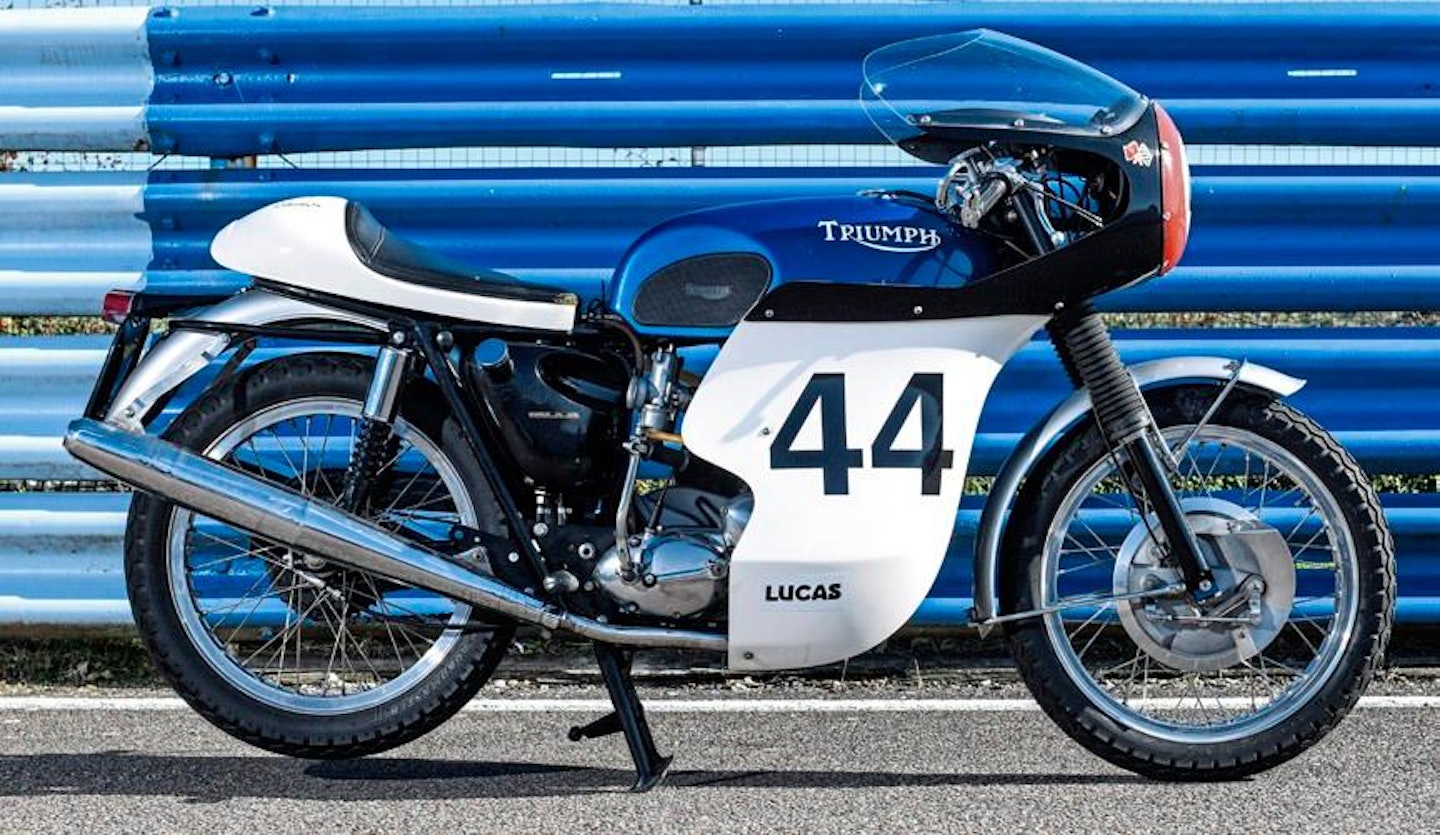
Bernard traced other former MAC 234E racers, and last summer Peter Carrana invited him and his bike to a reunion barbecue, also attended by former Elite Motors rider Lenny Phelps, visiting the UK from his South African home, and his regular mechanic Graham Veryard. Lenny, who rose to prominence as MAC 234E’s regular rider, recalled racing at Llandow, South Wales. When he beat a local hero, he and Graham also won over his fan girls. Peter remembered being asked by Ron Welling of Elite Motors to take MAC 234E to the Isle of Man as Lenny’s practice bike for the 1969 Production TT. “It stood up to a lot of abuse, but survived.” He praised the bike’s handling, as did Martyn Ashwood, also contacted by Bernard, who recalled rounding Gerard’s at Mallory Park flat in third during the 2000 Guineas race. He contends that he and Dunphy were rightful winners of that event, due to lap scoring errors, and the winning Dunstall team of Ray Pickrell and Dave Croxford privately admitted so.
